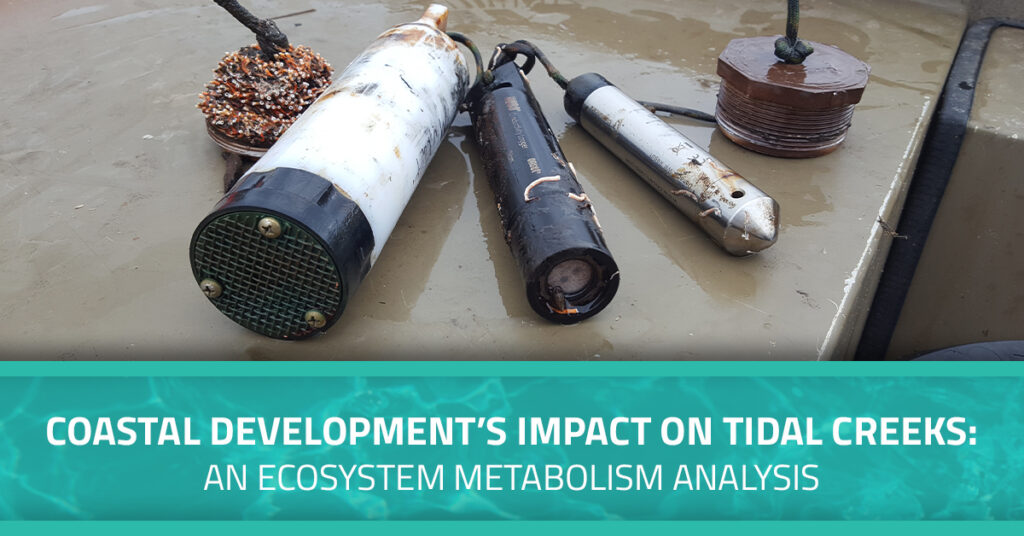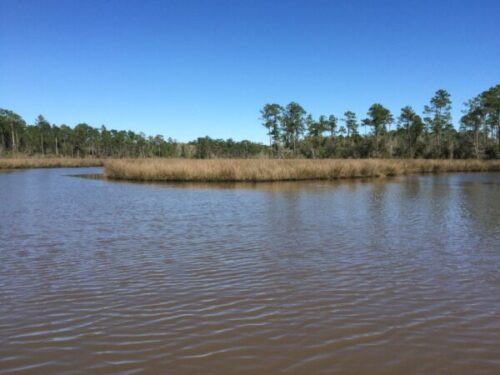The miniDOT® Logger is a completely submersible instrument that logs dissolved oxygen and temperature measurements. Data is recorded on the internal SD card and operational functions, like setting time and sample intervals, can be accomplished via USB cable. The oxygen sensor is an optode that measures dissolved oxygen (DO) concentration in water through a fluorescence method. The miniDOT® can withstand temperatures ranging from 0–35°C.

Finding Freedom from Fouling: Adding Wiper Technology to the T-Chain
January 15, 2023
Measuring Ecosystem Metabolism After Stream Restoration
March 27, 2023Coastal Development’s Impact on Tidal Creeks: An Ecosystem Metabolism Analysis
Project Details
- PRODUCT(S): miniDOT® Logger
- APPLICATION: Coastal / Ocean
- PARAMETER: Dissolved Oxygen, PAR
- LOCATION: Northern Gulf of Mexico
- ORGANIZATION: Auburn University
- RECOGNITION: Samuel Bickley, Ph.D.

Case Study Description
The City of San Francisco is synonymous with iconic landmarks like the Golden Gate Bridge and Alcatraz Island, as well as the surrounding bay. While the bay’s cold waters and brisk currents hardly invite casual swimmers, less than 15 miles due east lies another scenic spot with far friendlier waters. Lake Anza is nestled amid the Berkely Hills in Tilden Regional Park, one of over 70 parks within the East Bay Regional Park District. Constructed in the 1930s, today the reservoir is known for its pleasant beach which attracts scores of swimmers and visitors every year. Unfortunately, recent decades have seen increased rates of harmful cyanobacterial algal blooms which threaten the safety of Lake Anza’s visitors and the health of its ecosystem.
Within most healthy bodies of water, the presence of vegetation is expected and indeed beneficial. However, the presence of algal blooms is often indicative of an ecological imbalance like an excess of nutrients. Blue-green algae, or cyanobacteria, is a particularly harmful type of algal bloom as it can produce toxins like microcystin. Microcystin and other cyanobacteria toxins can sicken humans and mammals, even proving fatal in sufficient quantities. If left unchecked, algal blooms may create “dead zones” by depleting aquatic oxygen levels and preventing photosynthesis until the water cannot support aquatic flora or fauna like the native Rainbow Trout population.
The Ecology of Tidal Creeks
Compared to their freshwater counterparts, tidal streams have been largely neglected in watershed studies. As such, regulations designed to prevent urban development may not be effective or applicable. Tidal creeks are defined by their salinity and can experience tidal activity miles inland. These bodies of water are also unique in part because they contain a great deal of organic matter; this heightened volume of biological activity results in lower average levels of dissolved oxygen (DO). Sudden changes in salinity, such as those resulting from recent development nearby, can negatively impact the creek’s ability to sustain the organisms within – potentially leading to changes in the ecosystem’s food chain. By tracking salinity and DO levels across tidal creeks experiencing varying urban watershed, Bickley could better understand how subsequent fluctuations impacted the creeks’ wider ecosystem metabolism.

Net ecosystem metabolism is the difference between an ecosystem’s respiration (ER) and gross primary production (GPP). While ER refers to the sum of carbon dioxide produced by organisms within an ecosystem, GPP refers to the synthesis of carbon dioxide into organic compounds. Put simply, this process reflects the creation of– and use of organic matter, both of which are crucial for sustaining aquatic food chains within tidal creeks.
Methods and Observations
In 2019 Bickley deployed miniDOT®s at six of the study’s twelve sites alongside salinity and pressure sensors. Sensors were submerged at depths just below average low-tide levels to avoid lapses in data collection. The sites were selected to represent a gradient of urbanization, ranging from forested areas to those which were highly urbanized. Programmed to record at 15-minute intervals, the miniDOT® and other sensors underwent routine maintenance and data retrieval every 2 months on average. The units went largely undisturbed until their final retrieval in 2020. Notably, before their final retrieval Bickley’s miniDOT®s successfully weathered Hurricane Sally which made landfall close to several research sites in September of 2020.
Bickley’s study ultimately found that changes in stream salinity and ecosystem metabolism were detectable in areas featuring even the lowest level of urbanization. Higher levels of urbanization were consistent with greater fluctuations in stream salinity, which in turn are affecting ER. While this study did not establish a direct relationship between ecosystem metabolism and nearby development, Bickley noted that corresponding measurements of GPP and ER did react to urbanization consistently across monitored sites. Altogether, these findings suggest that urbanization is contributing to the disruption of fragile ecosystems and calls for heightened awareness among conservationists and regulatory entities.

